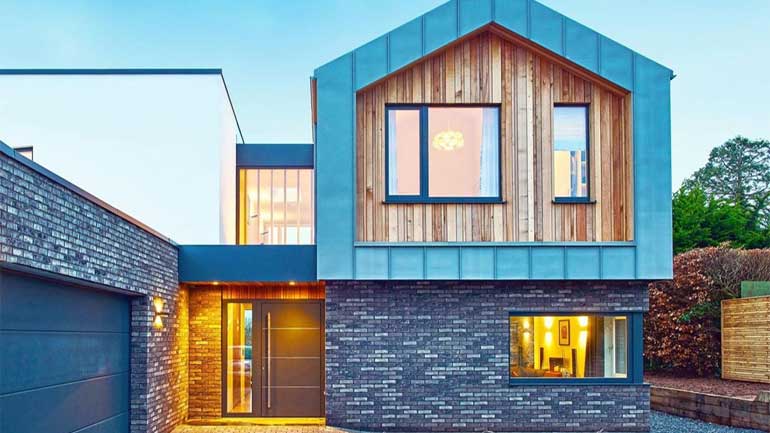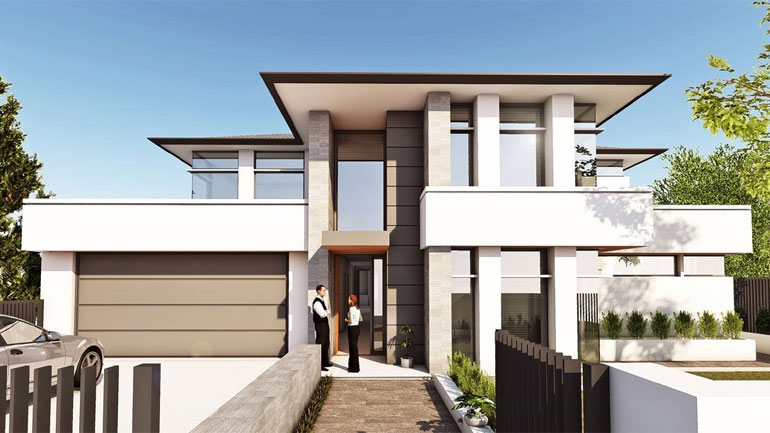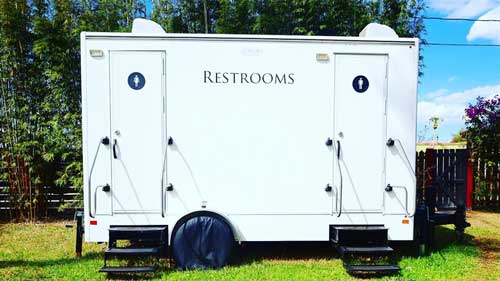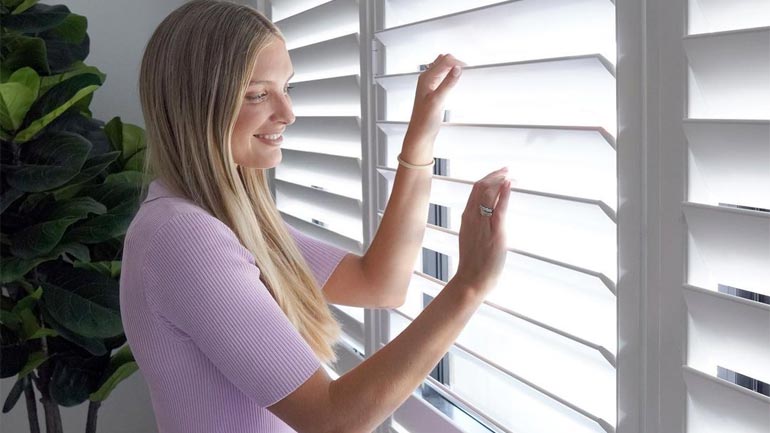
Cladding is a layer of non load bearing material added to the outside of the home to protect it from the weather. It also is one of the major design features of a house, meaning it has a huge impact on the appearance and street appeal of your property.
Whether you’re building a new home or renovating, choosing which cladding to use is an important decision. Ideally, you want a cladding which is durable, water resistant, rot resistant and fire resistant. You might also want to consider its thermal and acoustic properties.
Check out the top cladding options below which could give your home the eye-catching finish it needs.
1. Natural Stone
Natural stone is a great way to add texture and depth to a wall while achieving an organic look. It’s often an attractive complement to the smooth materials and lines used in contemporary architecture.
Stone cladding can be installed in a repetitive pattern or “free form” if you prefer a more traditional or aged look. The spaces between the stones can be grouted or left as a “dry stack” without grout, depending on the style you’re going for.
Stone is a durable cladding choice, is naturally fire resistant and requires little maintenance. If natural stone is out of your price range, there are human-made options which mimic the appearance of natural stone.
2. Hardwood Timber
Hardwood timber cladding is a classic choice that is still loved and widely used in modern homes today. It’s hard to look past the natural textures and colours, which can vary depending on the type of wood you choose.
There is a wide range of timber species that are suitable for exterior cladding, including jarrah, blackbutt, ironbark, teak, and spotted gum. Many of these species are naturally fire-resistant, making them a good choice for fire prone areas.
As far as its impact on the environment goes, timber rates pretty well – especially if you choose a local Australian wood from a sustainable source.
Timber cladding will expand and shrink depending on the moisture content in the air, so it’s important to choose a cladding design that allows for this natural timber movement. Keep in mind, timber exposed to direct sunlight will require periodic maintenance to preserve its appearance.
3. Shou Sugi Ban
Shou Sugi Ban cladding is a traditional Japanese method of charring timber with fire so that it develops a thin layer of black carbon on the surface.
Although it might seem counterintuitive, the process actually makes the wood more resilient, increasing its lifespan and reducing its maintenance needs. The wood is usually coated with oil prior to installation and will need recoating periodically to help preserve its appearance.
Not all species of timber will achieve a desirable result when they go through the charring process. Traditionally Japanese cedar was used, but burnt ash and jarrah are good options for modern Australian homes today.
4. Brick
Brick cladding is a classic and is still one of the most popular choices in Australia today. Sometimes it’s used in conjunction with timber cladding to achieve a more balanced look.
Brick is highly durable, fire resistant, and great at letting your home breathe, but it isn’t the best when it comes to moisture resistance.
There’s a diverse range of finishes you can achieve with brick, from the traditional look to a more artistic masonry style. Although the smooth style of a rendered wall has been popular in the past, more people are now looking toward the texture and colour that unrendered brick offers.
5. Fibre Cement
Fibre cement is a composite material made from cement, sand, and cellulose fibres. It’s most commonly used in the form of sheets, planks, or weatherboards for cladding applications.
Fibre cement is resistant to rot, fire, termite, and warping, making it a durable exterior cladding option. It’s also highly energy efficient and uses less energy during manufacture than most other options, timber being the exception.
Maintenance requirements are fairly low for fibre cement, but you will need to reapply paint periodically to ensure it remains water resistant.
6. Aluminium
Aluminium cladding is lightweight, very durable, and an excellent water barrier. The fire resistant properties of aluminium are also good, but it offers zero insulation.
Aluminium is quite versatile in terms of the final look you can achieve, including panels and perforated mesh. It’s also available as a folded weatherboard product. The most common finish for aluminium cladding is powder coating, although a full spectrum of colours is available.
7. Steel
Steel cladding is renowned for being low maintenance and very durable. It comes in a range of different styles and appearances, from corrugated steel to steel with a baked enamel finish.
Keep in mind that coloured finishes are likely to fade over time and there must be enough room left at the joins as steel will expand and contract with changing temperatures. Steel is also susceptible to condensation forming, so adequate ventilation should be factored into the design.
Choosing the right cladding for your home
Deciding on a type of cladding can be tricky, so it’s best to speak with a professional about which options would be most suited to your home. Keep in mind that there may also be building regulations you’ll need to adhere to when installing your cladding.
In addition to its appearance, make sure you weigh up how the cladding performs in terms of durability, moisture resistance, and fire resistance. Also, consider the environmental impact of the material and whether it can be recycled at the end of its life.




